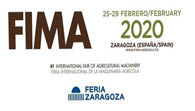Tales and Legends of Zaragoza

La Casa Duende
There was a building in Zaragoza, in the first half of the century, that became famous in Europe. In September 1934, located in the kitchen of one of the floors which would later be called 'Casa Duende', sinister laughter voices and screams of inexplicable origin were heard. They seemed to come from the fire and alerted the police to begin the investigation, it was the first official 'paranormal phenomenon' in Spain and had the city on the scope. Soon the news of the mysterious voices spread throughout Europe, while people whose innocence was later proven was being accused of causing the sounds. Of these, the strongest indictment was exerted against the maid of the house, saying she was a skilled ventriloquist. Tenants have continued to hold after hearing the voices and mysterious, but never clarified the facts, in 1977 the building was demolished. The new building blocks in place today is called La Casa Duende.
Tenants have continued to hold after hearing the voices and mysterious, but never clarified the facts, in 1977 the building was demolished. The new building blocks in place today is called La Casa Duende.
Zaragoza Manuscript
It is a famous novel set in the city of Zaragoza published between 1804 and 1805 (French original, 'Manuscrit trouvé à Saragosse') by the noble historian, scientist and writer Jan Potocki, born in Poland in 1761 who died tragically in 1815.
This story was published in two parts and completed shortly before the death of its author.
The book, known for the gothic genre fans as one of the greatest literary references, influenced novelists. It was also brought to cinemas by the Polish filmmaker Wojciech J.
What does the word 'Zaragoza' mean?
Zaragoza is built on the foundations of the Roman camp established on the Iberian town of Salduie. It was named the Emperor Caesaraugusta. After the Muslim invasions it became an important urban center in Medina al-Baida called Saraqusta-Zaragoza la Blanca. Eventually became the capital of his Taifa.
After the Christian reconquest in 1118 it was renamed to Saragoça and later evolved into Çaragoça name, finally adopting its current name, Zaragoza.
The murder of Pedro Arbués
Arbués Pedro, a native of the town of Épila (1441-1485), was appointed by Torquemada inquisitor of Aragon in 1484. It was an era full of convulsions and large uncertainties for the converts, many of whom were part of some of the richest and most influential families of Zaragoza. In addition, the nobles of the Kingdom of Aragon in the Inquisition were a barrier to retain their privileges.
In this context they began to perpetrate a conspiracy against him. This culminates while praying before the altar of the Cathedral of Zaragoza, September 14, 1485. Eight murderers stabbed him.
Pedro Arbués was canonized by Pius IX in 1867. His tomb, sculpted by Gil Morlanes, is in the Cathedral of Zaragoza.
Don Quijote and Zaragoza
"`Llegó Sancho a un lugar de hasta mil vecinos, que era de los mejores que el Duque tenía. Diéronle a entender que se llamaba la Ínsula Barataria, por lo barato con que se le había dado el gobierno´.".
Experts in the most important literary work of Spanish literature agree that the famous passage from the island of Barataria is set in Alcalá de Ebro. This is one of the many towns he went through Don Quijote with his faithful Sancho Panza.
Although he never set foot in Saragossa it was the intention of Miguel de Cervantes sad figure knight and his squire to give an end to his adventures in this city, which did happen in the apocryphal Don Quixote ',' also known as Avellaneda . In this one, written in 1614, Don Quixote himself came in Zaragoza, which made Cervantes, to write the second part of the novel in 1615 deviated from the route originally designed, making landfall in Barcelona.
Who is Fluvi?
Fluvi is the official mascot of the Expo Zaragoza 2008 designed by Sergi Lopez Jordana, Professor of Art and Design.
Although its forms gave rise to many interpretations of its meaning, the truth is that this is a drop of water. Along with his friends Nico and Laurita,they live exciting adventures in defense of the environment and against ecological disasters that continually try to provoke their eternal enemies, Sec & Raspa.
The first Spanish film
Did you know who was the first Spanish film director? Eduardo Jimeno was Peromarta And the title of the first film shot in Spain? `Well, Misa del Pilar Out '. And in what city took place this shoot? You guessed it: in Zaragoza. Indeed, on Sunday October 11, 1896 and rolled Jimeno Correas produced this film, to be followed, exactly one week later, another entitled 'Greetings'. Although these recordings have not had a storyline, the seed film was already in the peninsula. Aragon was so decisive in creating the film in our country, the first internationally successful Spanish director was the Second Chomón Teruel, who worked in France and Italy.









